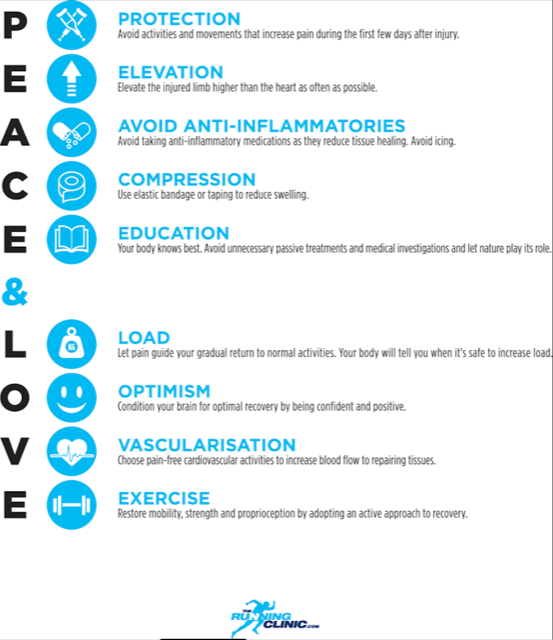Sprains and strains to muscles and joints happen to all of us and for most they are a painful, but temporary reminder to be a little more careful. Prompt action can help your body to heal faster and may prevent further injury or prolonged pain.
Remember RICE? (Relative rest, Ice, Compression and Elevation), we now use PEACE & LOVE which is rather a long acronym but bear with .......... we as Osteopaths do use this to guide you through the healing process.
Protect
Elevation
Avoid anti-imflammatories and ice!
Compression
Education
and (when you are ready)
Load
Optimism
Vascularisation
Excercise
Seek Medical Attention
Your Osteopath can help.
If the pain or swelling fails to improve within a week, a visit to an Osteopath may be beneficial. They will be able to assess the injury, advise you on the correct treatment, guide you through some self help and can provide some specific manual therapy which may help with a speedier recovery.

 RSS Feed
RSS Feed